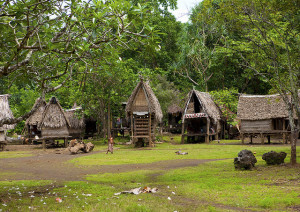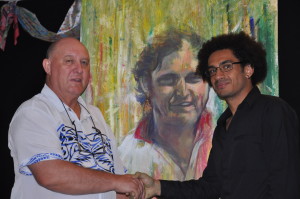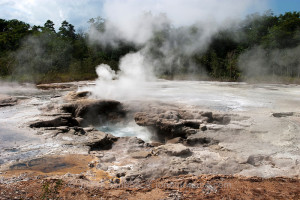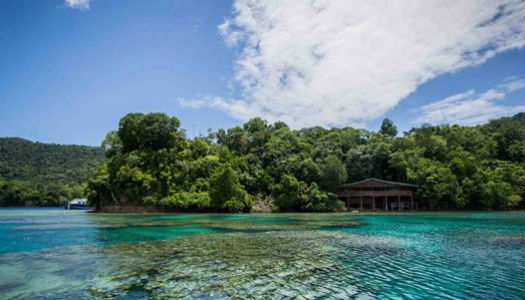The province of Milne Bay is developing as a tourism hub for Papua New Guinea but also hosts agricultural and gold projects. Business Advantage PNG explores its business and investment prospects.
Milne Bay’s provincial capital, Alotau, is the friendly, welcoming place that many parts of Papua New Guinea used to be 30 years ago, says David Conn, Executive Director of the Port Moresby Chamber of Commerce and Industry, who has a home in the province.
‘It is all that is good in PNG and its people. The capital Alotau is like a walk back in time and a magnificent stress buster and the islands are a just a slice of Paradise,’ he says.

Trobriand Island village. via Flckr
Tourism
Alotau and the coastal strip on either side played a pivotal role in the WWII Battle of Milne Bay, as a huge naval base through which hundreds of thousands of servicemen passed. Many Kokoda Trail tours include a visit to Alotau and the Bomana War Cemetery, which is the largest war burial ground in the Pacific, where more than 3700 servicemen are buried.
Cruise liners are now a regular feature of the growing tourism industry of Milne Bay province, with thousands visiting annually.
‘It is now firmly on the map as a cruise destination and the people need to be educated in what these tourists want to see and do so there are decent economic spinoffs from each visit. Tourists want to see this too,’ says Conn.
The province is home to well-known islands like the low-lying Trobriand Islands (famous for yam), Woodlark (home to the Kula Gold mine), Samaria (prior to the Second World War a major shipping centre for expeditions between Australia and Southeast Asia), the privately-owned Conflict Group and the D’Entrecasteaux Islands (which still have volcanic activity).

David Conn with local artist, Jeffrey Feeger
There are 10 large islands and about 150 islands and atolls scattered over 250,000 square kilometres of ocean. In many areas, the reefs are characterised by dramatic drop-offs and overhangs.
‘There are about 276,000 peace-loving people who speak English as their second language living in the province,’ says Didimus Epo, Principal Advisor at the provincial government’s Division Of Commerce & Mines.
‘The main mode of transport around the islands for 95 per cent of the population is by sea,’ he says.
Mining
Earlier this year, Australian-based Kula Gold was granted a mining lease to develop its Woodlark Island Gold Project about 250 kilometres east of Alotau.
One estimate is that the province contains more than 60 million ounces of gold.
Eight projects currently have prospecting status, says Edo, and feasibility studies are underway on two geothermal projects on D’Entrecasteaux Islands.
One is located near the north end of Normanby Island; the other is a well known dive site known as the Bubble Bath, located offshore near the mid-north coast of Dobu Island, an extinct volcano.
Agriculture & forestry

Geothermal springs. Credit Jonas Tonboe
New Britain Palm Oil has a large palm oil plantation, Milne Bay Estates, and there are many small-scale village projects in cocoa and copra production. Other small agriculture includes vanilla, rice and livestock.
Three main forestry companies, Masurina Timbers, Saban Enterprises and South Pacific Timber, operate in the province. There is also a small 1465 hectare afforestation plantation at Ulabo.
Fisheries & aquaculture
Milne Bay has recorded a third of the world’s species of marine fish and is listed as an ‘ecological hotspot’ with one of the greatest marine species biodiversities in the world.
Its seas are packed with the tiny ghost pipe fish, huge manta rays and killer whales, giant marlin, sailfish, wahoo, dogtooth tuna, mackerel, barramundi and the famous Papuan black bass. There is one local fish market, owned and operated by the Huhu local government.
Milne Bay is also the location for an established pearl farm, while Didimus Epo reports overseas investor THC Ltd is currently examining the possibility of a joint venture onshore fisheries investment in the province.
Milne Bay Province: key statistics
Population: 276,000
Land area 98,048 km2
Provincial capital Alotau (pop. 15,939)
Major Industries: Tourism, mining, agriculture
Governor: Titus Philemon
Main languages: Tawala, English, Suau, Tok Pisin









Speak Your Mind